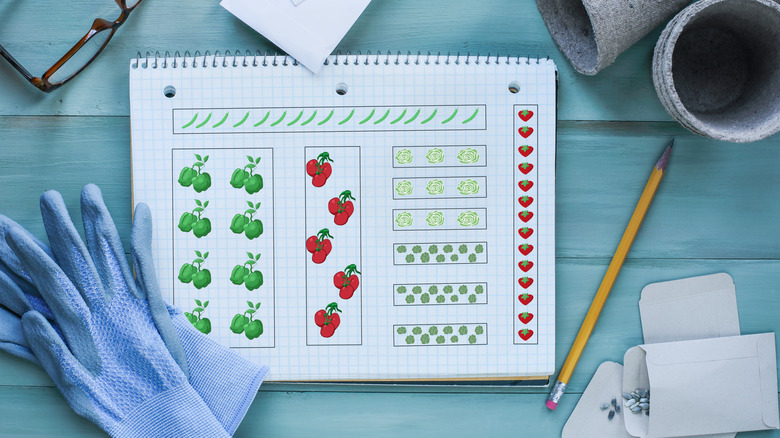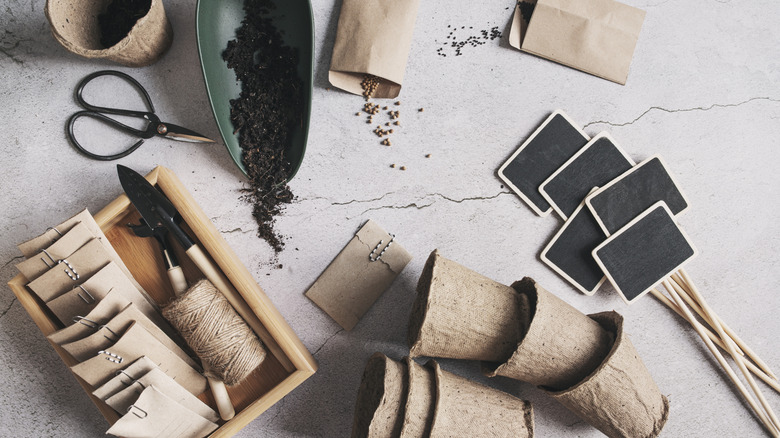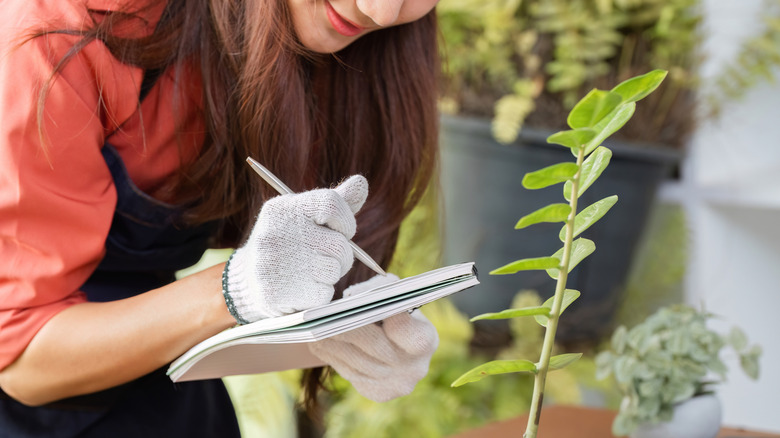A Garden Journal Is What Your Plants Need. Here's How To Get Started
If you've ever lost track of when you planted your basil or forgotten which tomato variety thrived last summer, it might be time to start a garden journal. Think of it as your garden's personal diary: a place where you can track progress, celebrate the small wins, and troubleshoot future growing problems before they happen. You don't need to be a hardcore homesteader or a professional gardener to benefit from one. Even if your garden is a couple of potted plants on a patio, writing things down will help you understand what works best for your specific setup. Plus, it's fun to flip back and see how far your garden has come.
Beyond the satisfaction of keeping notes, a garden journal becomes an indispensable tool in your plant-care arsenal. You'll quickly start to see patterns emerge — like which plants need more shade, what pests tend to show up when, and whether amending soil actually helps improve the life of your plants. A garden journal allows you to make intentional choices rather than starting from scratch every season. And it isn't limited to outdoor vegetable and fruit gardens either. You can keep track of the statistics of your indoor houseplants or the expansive herb garden on your windowsill. There are really no rules when it comes to creating the perfect garden journal, so it's all about how you customize it to benefit your setup. It doesn't even need to be a physical journal either. Create a stunning online portfolio of your garden's progress, with images, graphs, and growth charts. Make it a habit that sticks into your daily gardening routine so your future self is well equipped for any gardening questions.
Keeping track of seeds and growing schedules
One of the most practical benefits of a garden journal is that it helps you keep tabs on your seeds — what you've planted, where, and when. When you're juggling heirloom carrots, fast-growing radishes, and a sprawling pollinator-friendly garden, things can quickly get confusing. Use your journal to record each seed variety, the brand or source, and any specific growth requirements (like soaking overnight or starting indoors). This can be especially helpful if you're experimenting with new seeds or trying to decide which ones are worth replanting next season. It can also be a great way to keep track of growth rates, as some plants may struggle in your soil type or climate while others thrive. A simple chart or list works well, but feel free to customize it with drawings, color coding, or stickers.
Mapping out your planting layout and timeline in your journal can also make your life that much easier. Sketch a rough diagram of your beds or containers and label where each crop is going. If you want to get specific, you can measure your garden and scale it down to have an accurate depiction of the amount of space that each plant may take up. Obviously, this will vary depending on the individual plant, but it can help you stay organized when planning gardens for years to come. As the season progresses, you can update the timeline with actual harvest dates or notes on how the plants performed. This will come in handy during the next planting season, when you're trying to rotate crops or figure out which varieties are worth the wait. You can also keep track of each harvest so you know exactly how many of each plant you will need for the following season.
Other important features of a garden journal
While seed tracking and planting schedules are the backbone of most garden journals, don't be afraid to get creative with your project and go beyond the basics. Sketches, for example, are a great way to add visual interest to your pages, helping to keep track of how your garden has evolved since you started. You don't have to be an artist either — stick figures and rough outlines can convey the message just fine. Draw the layout of your garden beds, document where you're trying to establish a few companion plants, or the different growth stages of your favorite seasonal herbs. These visuals can be just as helpful as they are enticing, making it easier to plan out your spread next season and avoid the inevitable "I swear I had space for beans last year" confusion. Over time, your journal will become a visual, and textural map archive for your garden, showing its steady growth in the process.
Another great use for the journal beyond planning is jotting down tips and lessons that were learned along the way. Did your cucumbers wilt early during a heat wave? Did coffee grounds actually change the color of your hydrangea's flowers? Write it down. These quick notes are especially helpful if you're still new to gardening or planning to share your space with someone else. Whether you want to provide notes for the new owner of your home or discuss your garden at the next book club meeting, these notes can come in handy. It's also the perfect place to stash clippings, plant tags, or even a pressed flower or two. There are no hard and fast rules when it comes to garden journaling, so try to be creative and thorough with what you choose to document.


